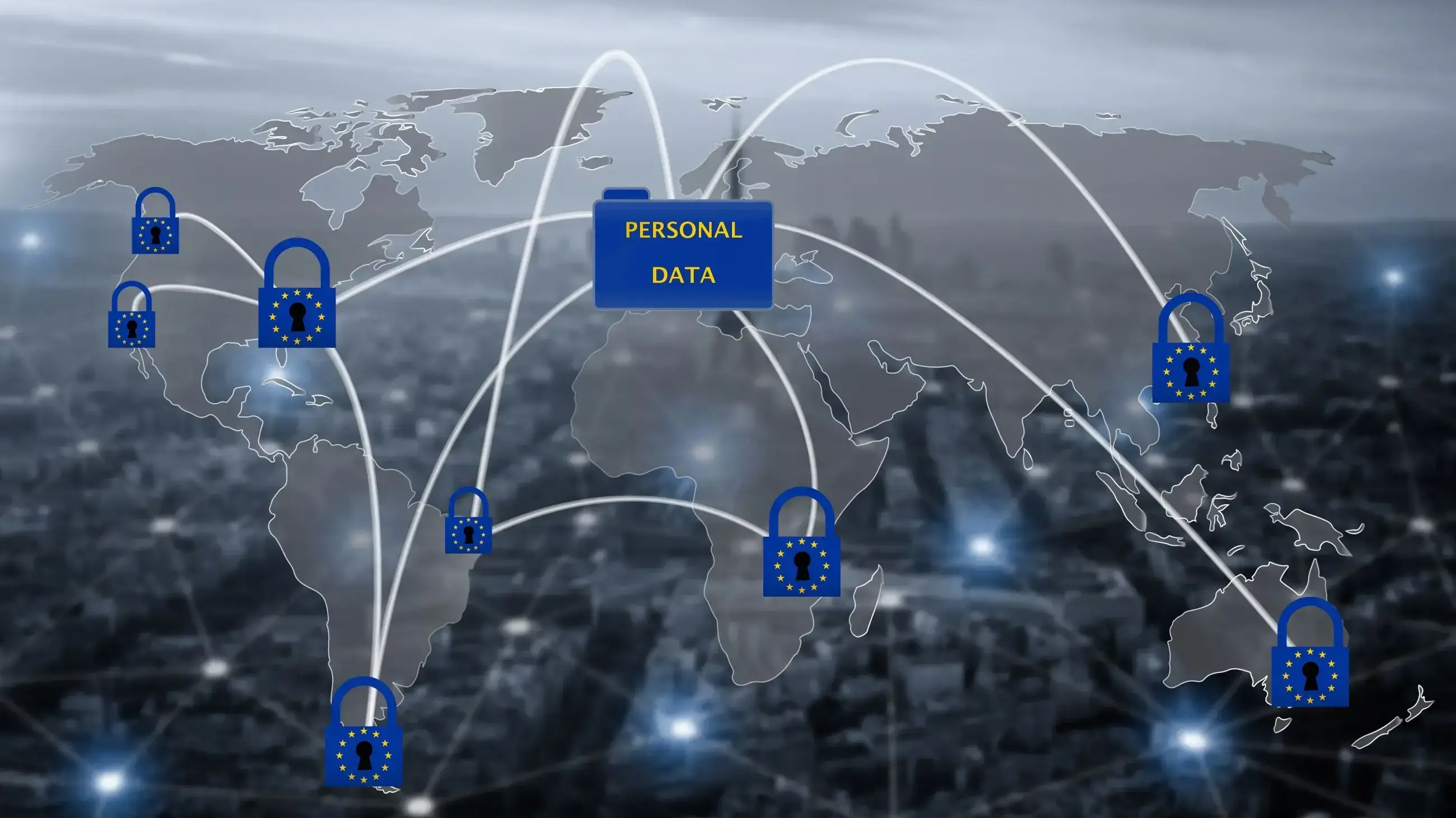The General Data Protection Regulation (GDPR) is a pivotal EU law designed to protect the personal data and privacy of individuals within the European Economic Area (EEA).
As a website owner, understanding GDPR's implications is crucial, as it affects not just how data is handled but also the hosting choices you make.
This article explores what GDPR means for your site, the roles of hosting providers and website owners, and how to stay compliant, even if you're outside the EU.
What is GDPR?
GDPR, or General Data Protection Regulation, is an European Union law focused on protecting user data and privacy within the EU and EEA.
It also governs data transfers outside these regions.
GDPR aims to give individuals control over their personal data and simplify the regulatory environment for businesses, especially those operating internationally.
GDPR Hosting Outside the EU
Some mistakenly think they can ignore GDPR if they or their hosting company are outside the EEA.
However, GDPR protects EEA citizens regardless of where a website is hosted.
Simply put, if EU citizens use your site, you must comply with GDPR.
While EU courts may struggle to enforce fines outside their jurisdiction, they can still take action, especially if you're offering goods or services to the EEA.
Complying with GDPR isn’t as difficult as it might seem, and it’s worth the effort if you have EEA visitors.
You can start by choosing a GDPR-compliant hosting service, like those offered by Verpex.
What GDPR Means for Your Website and Hosting Setup

The General Data Protection Regulation (GDPR) has significant implications for how your website handles data.
Here's a breakdown of what you need to know:
Data Collection and Consent
Ensure that your website only collects necessary data and that users give explicit consent before any data collection occurs.
This includes using clear language and providing an easy way to opt-in or opt-out of data collection.
Privacy Policy
Update your privacy policy to clearly outline how data is collected, used, and stored. Make sure this policy is easily accessible on your website, typically via a link in the footer.
Data Storage and Security
Your hosting setup should comply with GDPR's data security requirements.
This means using secure servers, preferably located within the EU, and implementing encryption and other security measures to protect user data.
Right to Access and Erasure
Provide users with the ability to request access to their data and the option to have it deleted. This functionality should be straightforward and easily accessible on your website.
Third-Party Services
If your website uses third-party services (such as analytics or advertising), ensure these providers are also GDPR compliant.
You are responsible for the data handled by these services.
Data Breach Notifications
In the event of a data breach, you must notify affected users and the appropriate authorities within 72 hours. Ensure your hosting provider can support this requirement.
GDPR Compliance: Hosting Provider vs. Website Owner
So, does GDPR have specific hosting requirements? The rules are still unclear.
Some argue that hosting providers, where user data is stored, must be GDPR compliant, even outside the EU.
Others believe the responsibility lies with the website owner, who controls the data.
There hasn't been an official ruling yet.
However, it's wise to choose a hosting provider that ensures compliance in case the courts decide otherwise.
Hosting companies that operate in or serve the EU/EEA must already follow GDPR.
Fortunately Verpex already prioritizes data safety and never uses your data for its own purposes.
Our security measures meet industry standards, ensuring compliance with current and potential GDPR requirements.
Tools and Resources to Simplify GDPR Compliance for Your Website

Navigating GDPR compliance can be complex, but there are tools and resources available to help simplify the process.
Here are some key solutions that can make it easier to ensure your website is GDPR compliant:
Privacy Policy Generators
Use tools like Termly or PrivacyPolicies.com to create comprehensive and customizable privacy policies that align with GDPR requirements.
Cookie Consent Managers
Implement tools like Cookiebot or OneTrust to manage user consent for cookies, ensuring you obtain and document consent in a GDPR-compliant manner.
Data Protection Impact Assessment (DPIA) Tools
Platforms like TrustArc and GDPR365 offer guided DPIA tools that help you assess and mitigate risks related to data processing activities on your website.
GDPR Compliance Plugins
If your website runs on platforms like WordPress, consider plugins like WP GDPR Compliance or Complianz to add GDPR-friendly features, such as consent forms and data request management.
Encryption Tools
Ensure data security with encryption tools like VeraCrypt for encrypting data at rest, and SSL/TLS certificates for securing data in transit across your website.
User Rights Management Solutions
Use tools like Data Subject Request Management by OneTrust to streamline the process of handling user requests for data access, rectification, or deletion.
GDPR Auditing Tools
Tools like Netwrix Auditor or AuditBoard can help you conduct regular audits of your website’s data processing activities to ensure ongoing GDPR compliance.
GDPR Compliance Checklists: What to Look for in a Hosting Provider

Let’s quickly review a checklist to help you identify key GDPR compliance features in a hosting provider.
- Data Center Location: Choose a provider with data centers in the EEA or certified for GDPR compliance if outside the EEA.
- Data Processing Agreement (DPA): Ensure the provider has a clear DPA outlining their GDPR responsibilities.
- Encryption Practices: Confirm the provider uses strong encryption for both data at rest and in transit.
- Breach Notification: Check if the provider has a protocol for detecting, reporting, and managing data breaches, with notifications within 72 hours as per GDPR.
- Access Controls & Privacy: Ensure strict access controls and privacy measures to prevent unauthorized data access.
- Security Audits: Look for providers that conduct regular security audits and vulnerability assessments for GDPR compliance.
- Compliance Certifications: Verify if the provider has certifications like ISO 27001 to demonstrate their commitment to security and GDPR.
- Data Subject Rights: Ensure the provider supports mechanisms for handling data access, rectification, and deletion requests.
- Data Minimization: Check if the provider practices data minimization, collecting and processing only necessary data.
The Future of Data Privacy: What Comes After GDPR?

As GDPR continues to shape the global data privacy landscape, it's important to consider what might come next.
Here are some emerging trends and potential developments in data privacy that could impact businesses in the future:
- More countries are enacting their own data privacy laws, following the GDPR model, leading to a convergence towards global standards.
- Users are becoming increasingly aware of their data rights, pushing businesses to build transparent, user-centric privacy practices.
- Innovations like Privacy-Enhancing Technologies (PETs) will play a key role in securely handling data in the future.
- AI and machine learning are likely to bring more sophisticated tools that automate data compliance tasks to keep up with evolving regulations.
- New regulations will likely focus on ensuring AI systems that process personal data are used ethically and in compliance with privacy laws.
- Future regulations may expand on the rights granted by GDPR, including stricter rules on data profiling and automated decision-making.
- Expect more industry-specific privacy regulations, especially in critical sectors like finance, healthcare, and technology.
- New frameworks and agreements will likely emerge to facilitate secure cross-border data transfers while ensuring privacy protections.
Acting Responsibly with User Data
As a website owner, staying GDPR compliant usually isn't too difficult.
The laws mainly apply if you collect, use, or sell data from your visitors.
The biggest tasks are putting up required notices, privacy policies, and related documentation.
Fortunately, most content management systems like WordPress offer built-in compliance options or plugins to make this easier.
Start by choosing a GDPR-compliant hosting provider and ensuring your site has the necessary notices.
As long as you’re not selling or misusing visitor data, you should be fine—especially if you're not actively targeting EU visitors, where most regulations apply.
Frequently Asked Questions
How to check if a website is GDPR compliant?
To check if a website is GDPR compliant, look for a clear privacy policy, consent mechanisms for data collection, options to manage cookies, and features allowing users to request access, correction, or deletion of their data.
Also, verify if the site uses encryption and follows data minimization practices.
Who will GDPR affect the most?
GDPR will most affect businesses that process or handle the personal data of EU citizens, particularly those in industries like tech, finance, and e-commerce. It also impacts companies outside the EU if they offer goods or services to, or monitor the behavior of, EU residents.
Does GDPR apply to US websites?
Yes, GDPR applies to US websites if they collect or process personal data of EU residents, offer goods or services to them, or monitor their online behavior.
Which countries does GDPR apply to?
GDPR applies to all EU member states and the European Economic Area (EEA) countries, which include Iceland, Liechtenstein, and Norway. It also applies to any organization outside these areas that processes the personal data of EU/EEA residents.






















